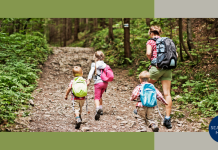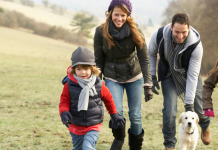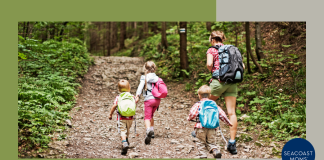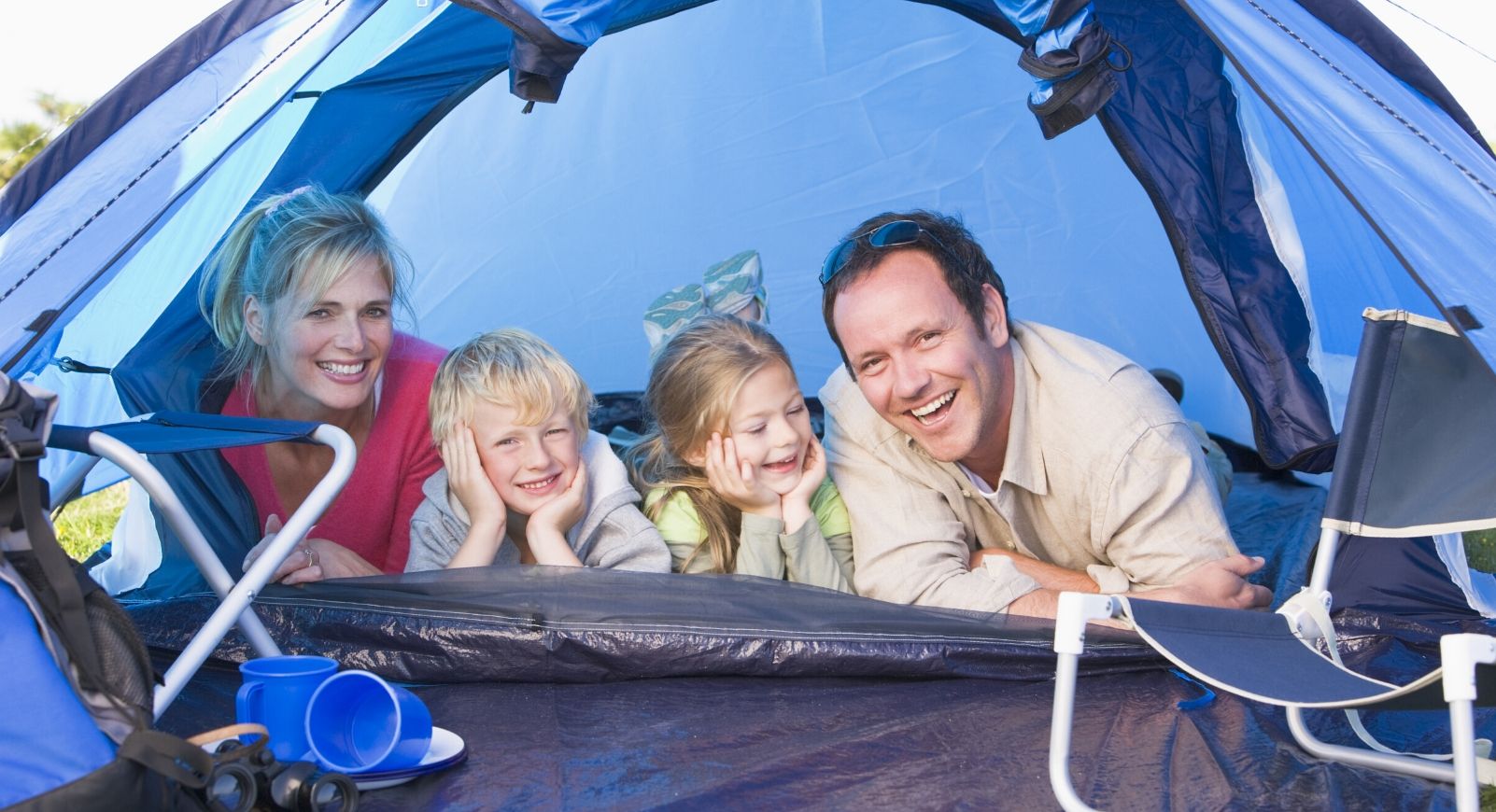Sleep. That ever-elusive topic of new parent conversation. In the early days, we fight with our own lack of it as our newborns slowly extend their nighttime hours. As they grow, we track it – from wake windows to sleep regressions (neither of which was a “thing” for our parents, but that’s a whole other article!). And once we master the nap, we protect it with all our might. That time is our respite, our one space during the day for exercise, cleaning, whatever it is we need to feel sane as a parent of littles.
As much as we want to protect sacred sleep schedules, at least for my husband and I, there are times we need to risk it. Prior to having children, we thrived in the wilderness. We are both trail runners and have spent many nights camping out for adventures or to help with trail races.
Enter: Twins. As much as we could possibly prepare, nothing truly prepares you for life with twin newborns. But we were determined to find ways to bring them along on (modified) adventures. At just over two months, we took them volunteering at the Loon Mountain Race and at 14 months we took them camping near Acadia National Park, with a few other adventures between.
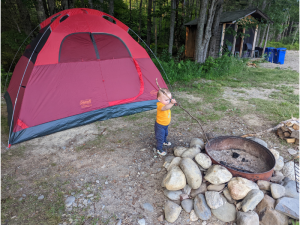
Here are a few things we have learned along the way.
Gear
A note on gear: when possible, purchase used. Outdoor gear can be expensive and as we all know, children outgrow things quickly. Parents who value outdoor adventures tend to take care of their gear and are eager to pass them along to newer parents wanting to explore with their own children. Check out Facebook Marketplace or ask within your own community, you might be surprised what you find!
1. Sleep Surface
The girls’ first summer, we relied on these travel bassinets. They provide a safe sleep surface, which gave me peace of mind. They also prevented the twins from rolling into my sleeping bag or each other.
Now that the twins are 15 months old, they can sleep in the tent without any particular gear. Some people swear by having a tent large enough for a pack & play, but we made do with a foam sleeping pad since two pack & plays was not feasible. Any pad that that won’t slip all over the tent is helpful, especially if your toddler rolls around in her sleep.
2. Ambiance
White noise is definitely a “need” item for us. We use it at home to support the transition to sleep and block out any distracting outside noises. The first time I tried to camp with my twins, I used my phone, which drained the battery and didn’t provide any light. When the girls were really little and waking through the night for feeds, I needed a readily accessible light source.
Then my brother recommended this portable chargeable white noise machine. It charges with a USB-C cable and has a variety of sleep noises and light levels. If you already have white noise but no light, keeping a headlamp or camping lantern within reaching distance is also a great option.
Routine
If you rely on a bedtime routine, you know how important it can be. While baths may not be available, most of the rest of a typical routine may be. We bring pajamas, sleep sacks, favorite books, stuffies and pacifiers.
If you are tent camping, one thing to account for is time for littles to adjust to the new environment. In the first few months, our newborns can adapt quickly to a new setting. Their vision and mobility are naturally limited. As they grow to the toddler phase, however, there is no stopping their curiosity. I have come to expect at least one of my girls will need upwards of an hour to ‘explore’ the tent before she is able to settle to bed.
Don’t forget that in the summer, the sun goes down later. If you are like us, you may have black-out curtains in your nursery. If you have a particularly hot evening, a rain-fly to block some of the light may not be an option. Be prepared for this to affect the time your littles settle in to sleep.
Location
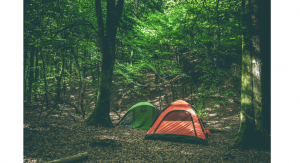
When I mention location, I mean not only your choice of campground, but also site location. We have some great family options for camping in New Hampshire. If you choose a traditional campground, look for a more secluded campsite – both for shade to hopefully avoid the 9pm bedtime and to be further away from other campers. While understanding neighbors may be totally OK with a 5am or middle of the night wake-up, it may ease your mind to believe no one else can hear the chaos in your tent. We have often used HipCamp, and try to follow the same rule of picking a site away from other groups. The sites are often more spread out, allowing for some additional privacy.
Naps
Naps on the go are never easy. Our daughters are in the midst of that lovely 2-to-1 nap transition, which while tough at home, actually gives us flexibility when traveling. The key is to get them in how and when you can. If your kids sleep in the car, schedule any travel around nap time. If they nap well in the stroller, use that to your advantage. Can they nap in hiking carriers or a soft carrier? And if you are one of those lucky parents and can get them down for a nap in the tent, do it! Forget the hard and fast rules of baby/toddler sleep, and do whatever works for your family.
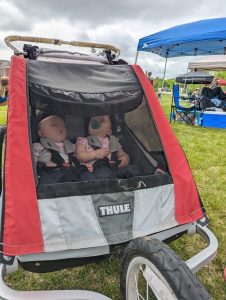
Downgrade Your Expectations
I have provided you with a variety of supportive sleep tips and gear options. However, this one is the most important. Know that sleep will likely not be as good on the road or trail as it is at home. The best thing you can do for yourself and your children is to go with the flow and remember the reasons you are choosing to camp as a family. As adults, our sleep often gets interrupted when we travel, too. Just as you recover, your children will as well. Flexibility is a skill that can be passed along and honed with practice.
Get back on track when you get home — we have found that having a “home day” is one of the best ways to recover after a trip. We play in the living room or outside and stick to our ideal nap and bedtime schedules, and don’t leave the house unless absolutely necessary and only for short times. It helps all of us reset after a few days away from a routine.


